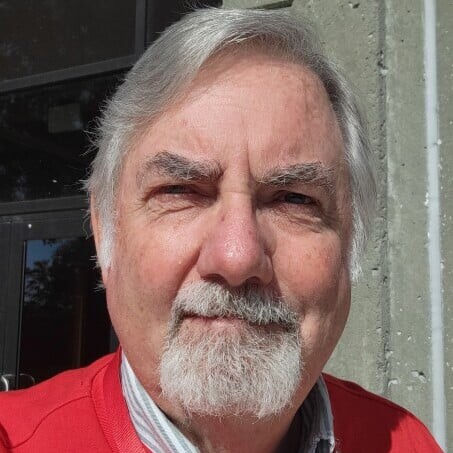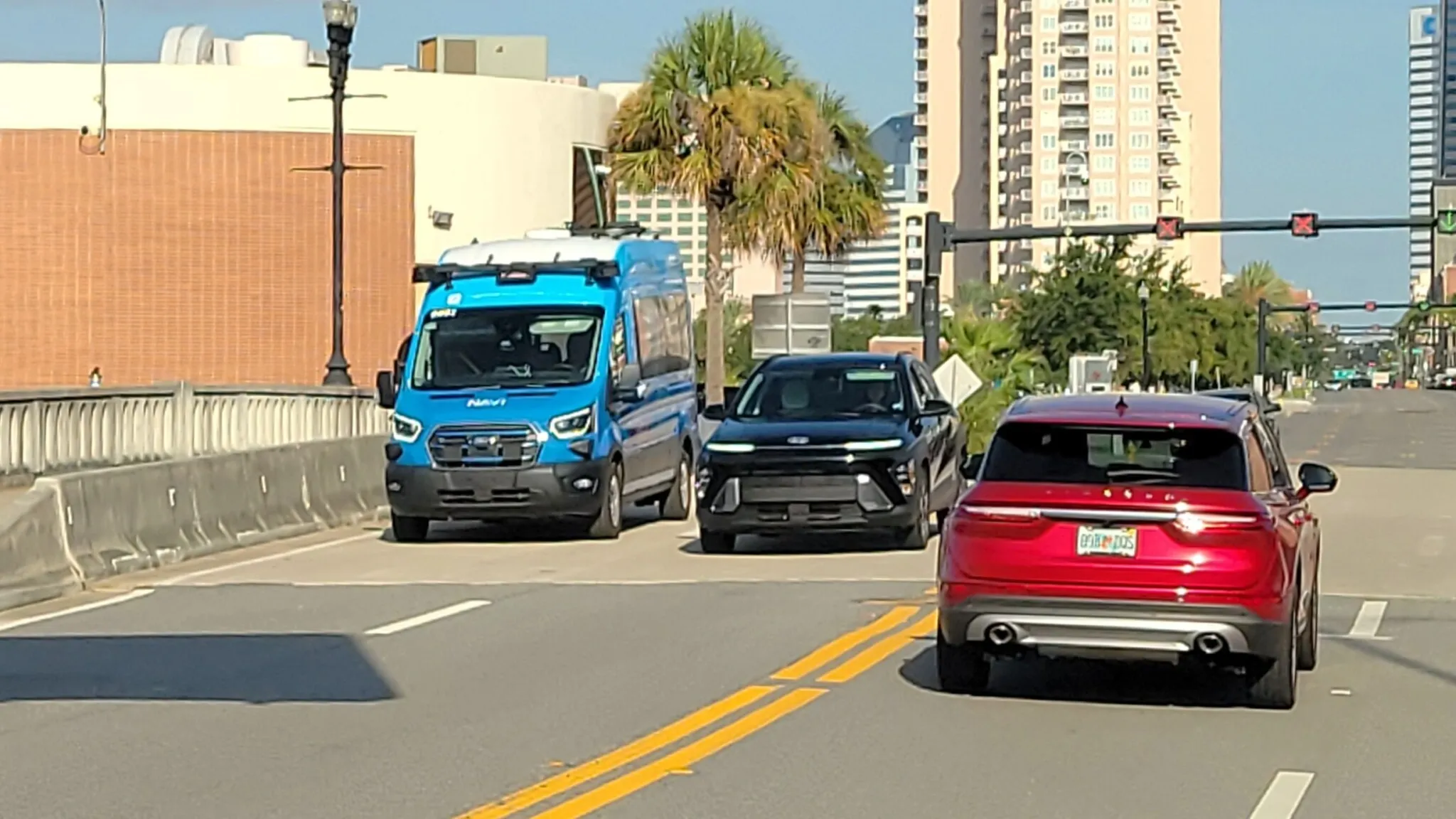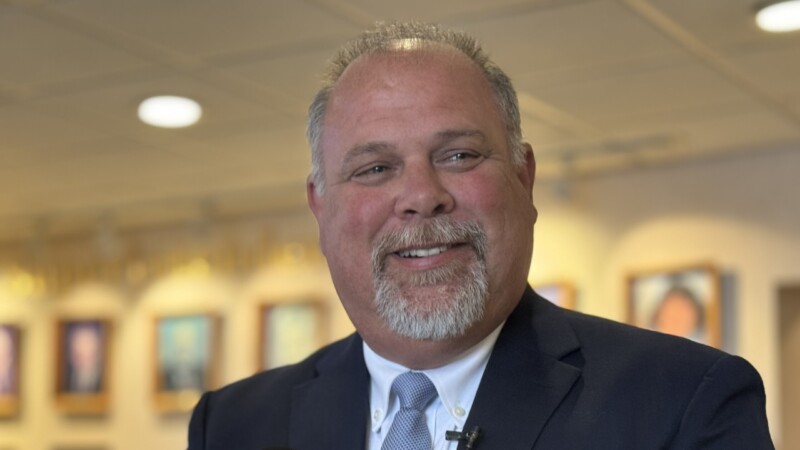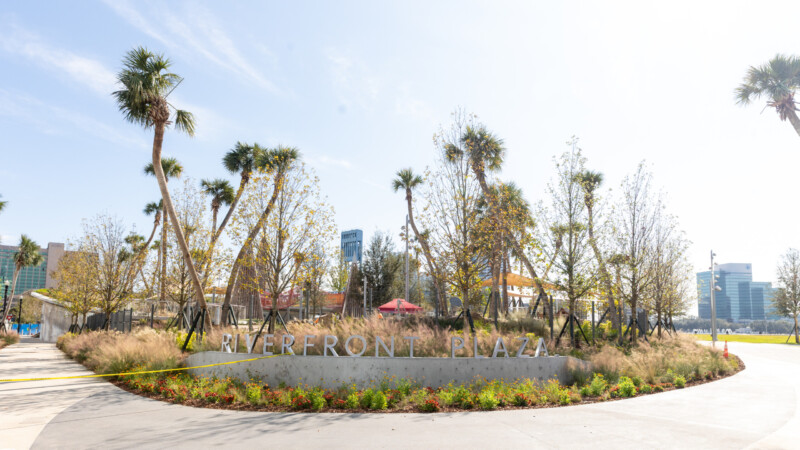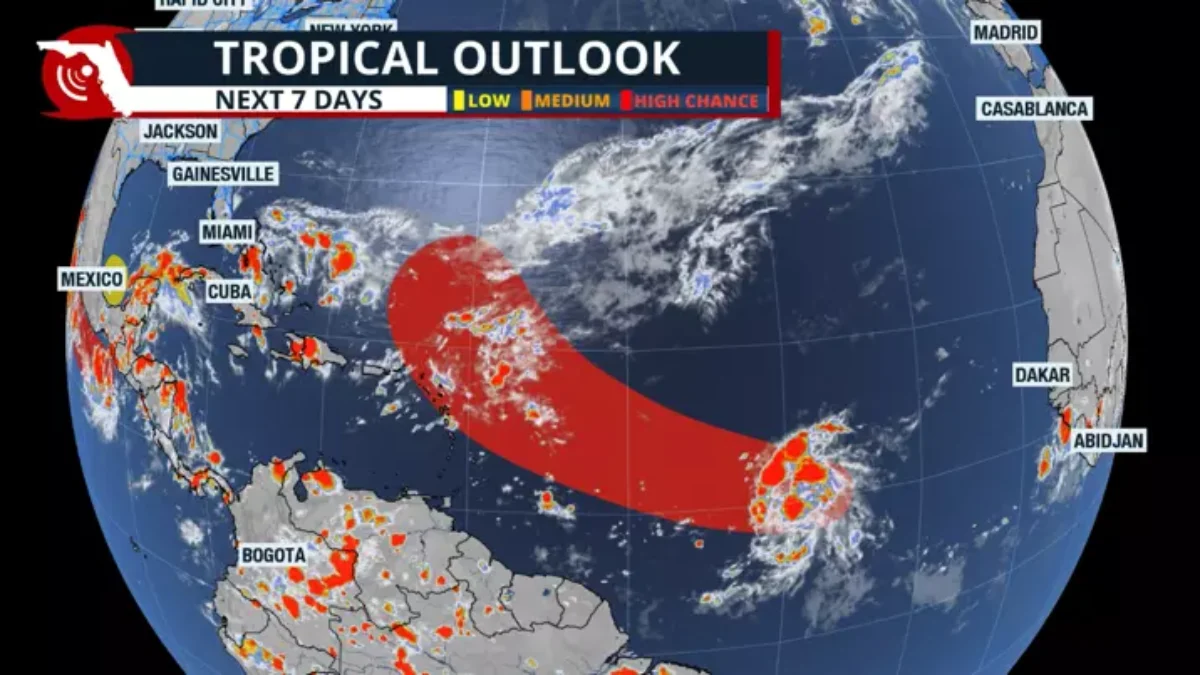The new autonomous Downtown shuttle service hit its three-month mark recently with an average of just over 100 riders per day.
A total of 6,853 people have used the blue electric vans operated by the Jacksonville Transportation Authority under the NAVI name, which stands for Neighborhood Autonomous Vehicle Innovation.
The weekday-only service — following a 3.5-mile route along Bay Street — was free until Oct. 1. The fare is now $1.75 per ride, the same as a bus.
Mayor Donna Deegan said Tuesday that it’s too early to gauge the success of the fleet of 14 blue automated shuttles.
Speaking on First Coast Connect on WJCT News 89.9, Deegan said autonomous mass transit will soon spread around the country. She is happy Jacksonville is a leader in this kind of service, she said.
Deegan predicted that NAVI will be Downtown’s transportation mode of the future, with drivers shifting to it as a raft of Downtown development is completed.
“Once you start seeing Downtown take shape, with all of the things that are coming Downtown — once you get the stadium process done, once you get the Four Seasons in and the parks done, and people will want to go to the Museum of Science & History and all those things,” she said. “I think you’re going to see ridership increase, if for no other reason than it’s going to be far more convenient than to try and drive Downtown and find a place to park.”
How NAVI works
The JTA fleet consists of 14 fully electric Ford vans that drive autonomously. An attendant sits in the driver’s seat for now to monitor progress, answer questions and take over driving when necessary.
JTA plans to keep the attendant on board for the first year of the service.
Ten shuttles are in service at any given time on a route that hits 12 stops along Bay Street, as well as Gator Bowl Boulevard and others in the sports complex.
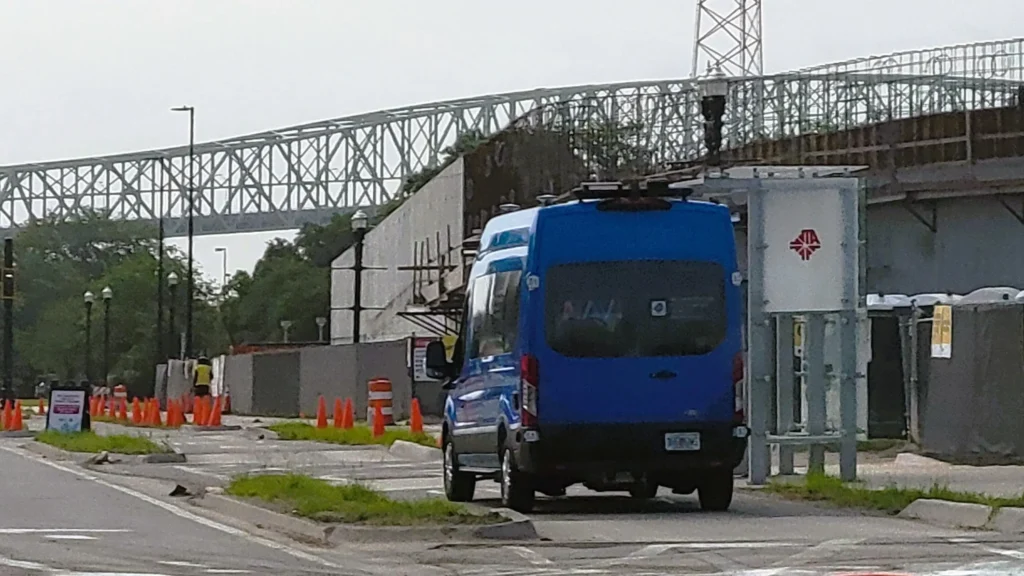
The City Council member who represents that area thinks the service should have begun “where it could actually get some real use.”
Council member Jimmy Peluso said NAVI’s use is limited because it doesn’t operate on weekends, nights or during Jacksonville Jaguars games.
“I keep thinking the system should be used down by (the University of North Florida) and the Town Center. That’s where it could actually get some real use,” Peluso said. “But ideally, this system should have a dedicated lane, even on game day. That’s what would help. However, the speed is still the secondary issue. It’s just too slow right now.“
The birth of NAVI shuttles
NAVI is the transit authority’s first step in a bigger plan called the Ultimate Urban Circulator, or U2C, which ultimately would replace the Skyway and link the Northbank to San Marco, Brooklyn and Riverside at an estimated cost of $400 million.
JTA tested various autonomous vehicles for a number of years, including transport of COVID-19 tests around the Mayo Clinic campus in 2020 and shuttles around the Downtown campus of Florida State College at Jacksonville in 2023.
JTA then began testing the autonomous Ford E-Transit vans on city streets between LaVilla and EverBank Stadium, with a control center opening on West Bay Street in April to monitor the self-driving vehicles.
The current NAVI shuttles represent Phase 1 of the U2C and cost $65 million.
Each electric van has multiple cameras and LIDAR, sonar and radar guidance systems to navigate around cars and pedestrians and react to stoplights and crosswalks.
Pedestrian sensors and high-tech traffic lights help along the shuttles’ route, while its covered U2C stops have benches and video screens that give directional information. All vans have lifts for riders who are handicapped.
Ridership projections
Like the mayor, JTA spokesperson Taniel Koushakjian said NAVI should get more riders as parks and MOSH are built in coming years along its current route, along with the $1.5 billion stadium renovations, the new Four Seasons Hotel and the adjacent office building.
Projections from the Florida Department of Transportation and Florida Transportation Planning Organization suggest ridership of 280 people a day by 2035, Koushakjian said.
“These are conservative projections that do not include the full 10-mile route or take into account the planned development coming to Bay Street,” he said.
Koushakjian did not specifically answer a Jacksonville Today question about whether NAVI could be expanded with Friday and Saturday night service for Downtown bar and restaurant customers. He did say JTA plans to add stops in 2026.
Next steps
The Ford vans will ultimately be replaced by the 15-passenger Holon Urban electric vehicles sometime in 2027. The first of those boxy people movers has been delivered to the JTA’s Westside test center, while others will be produced at the company’s first autonomous vehicle factory in Florida — on Zoo Parkway on Jacksonville’s Northside.
The first HOLON was on display at the Skyway Social last Saturday, and again in EverBank Stadium’s Fan Entertainment Zone during Monday Night Football this week.
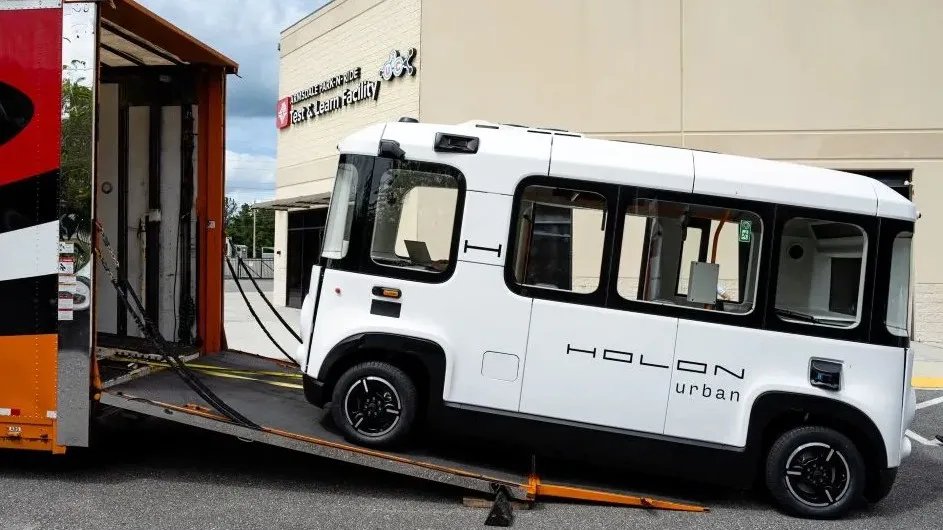
The U2C’s second phase will convert the existing 2.5-mile Skyway system in Downtown and San Marco into an elevated roadway for use by the Holons. Ramps will allow them to travel from Bay Street to the overhead roadways, including stops at the Jacksonville Regional Transportation Center at LaVilla and across the Acosta Bridge to the Southbank.
The second phase is in planning and design stages. Extension of the local option gas tax will partly fund its estimated $300 million cost. There is no construction date set yet, JTA officials said.
The U2C’s third phase will put the U2C on streets in the Brooklyn and Riverside areas, with an estimated $100 million cost.
